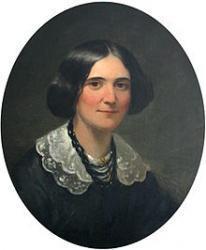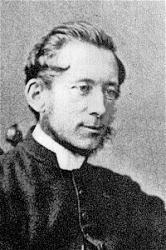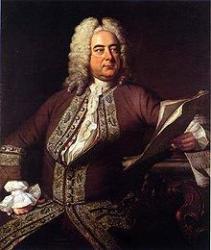
1820 - 1872 Author of "My God, I feel thy wondrous might" in Isles of Shoals Hymn Book and Candle Light Service Alice Cary (1820-1871) was born and raised in Mount Healthy in Hamilton County, Ohio. Her family had come from Lyme, New Hampshire when her grandfather was given land in return for his service in the Continental Army. She had been nationally recognized as an interpreter of pioneer traditions. Her short story collections depict Mount Healthy as it was transformed from an isolated rural village to a Cincinnati suburb. She and her sister Phoebe wrote for local religious periodicals before Alice moved to New York City. John Greenleaf Whitier praised Alice's stories as "simple, natural, truthful [with] a keen sense of humor and pathos of the comedy and tragedy of life in the country." Her hymn "Along the mountain track of life" was published in H.W.Beecher's Plymouth Collection, 1856. Her hymn titled "Nearer Home" was published in W.A.Ogden's Crown of Life (Toledo, OH: Whitney, 1875).
Mary Louise VanDyke
======================================
Cary, Alice, the elder of two gifted sisters, was born near Cincinnati, Ohio, 1820, removed to New York in 1852, and died there Feb. 12, 1871. The story of the two sisters—of their courageous move from a rural, western home, their life in the metropolis, their mutual affection, and inability to live apart—has attracted much admiring and sympathetic interest. As poets they were of nearly equal merit. Besides some prose works, Alice published a volume of Poems in 1850. Her hymns are:—
1. Earth with its dark and dreadful ills. Death anticipated. This fine lyric is given in Hymns and Songs of Praise, N. Y., 1874, and dated 1870.
2. Along the mountain track of life. Lent. The authorship of this hymn, although sometimes attributed to Alice Cary, is uncertain. It appeared anonymously in H. W. Beecher's Plymouth Collection, 1855, No. 438. It would seem from its tone and the refrain, "Nearer to Thee," to have been suggested by Mrs. Adams's "Nearer, my God, to Thee," which appeared in 1841.
In addition to these there are the following hymns by her in the Lyra Sacra Americana, 1868:—
3. Bow, angels, from your glorious state. Peace desired.
4. I cannot plainly see the way. Providence.
5. Leave me, dear ones, to my slumber. Death anticipated.
6. Light waits for us in heaven. Heaven.
7. A crown of glory bright. His Fadeless Crown. In the Methodist Sunday School Hymn Book (London), 1879. [Rev. F. M. Bird, M.A.]
--John Julian, Dictionary of Hymnology (1907)
======================
Cary, Alice, p. 214, i. From her Ballads, Lyrics and Hymns, N.Y., 1866, the following are in Horder's Worship Song, 1905:—
1. O day to sweet religious thought. Sunday.
2. Our days are few and full of strife. Trust in God. The original begins, "Fall, storms of winter, as you may."
3. To Him Who is the Life of life. God and Nature.
--John Julian, Dictionary of Hymnology, New Supplement (1907)
Alice Cary


